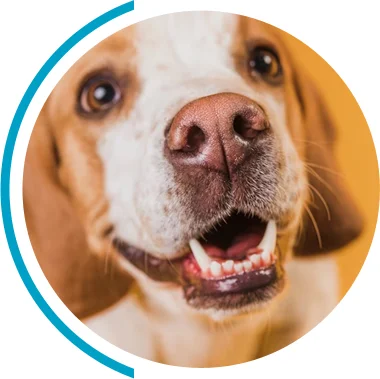Separation anxiety is a prevalent situation that many dog owners in Yorba Linda face. Understanding how to manage and train for this condition can significantly enhance the well-being of both pets and their owners. In this article, we will delve into the specifics of dog separation anxiety, discuss the importance of training, and explore various methods to help your furry friend cope.
Dog separation anxiety is a behavioral condition that can manifest when dogs are left alone for extended periods. This anxiety can lead to stress which, if not addressed, may result in destructive behaviors, such as chewing furniture, excessive barking, and inappropriate elimination. It is essential for pet owners to recognize these behaviors as signals of distress rather than mere mischief, as they often stem from a deeper emotional struggle.
The root of this condition often lies in the dog’s evolutionary background. As pack animals, dogs have a natural inclination to seek companionship. When separated from their human or canine pack, they can feel vulnerable and anxious. This instinctual behavior can be exacerbated by changes in their environment, such as moving to a new home, the loss of a family member, or even changes in the owner’s routine. These transitions can heighten a dog’s sense of insecurity, making it crucial for owners to provide a stable and reassuring environment.
The neurological and psychological aspects of canine separation anxiety are intricate. Research indicates that certain breeds, such as Labrador Retrievers and German Shepherds, may be more predisposed to this condition. Stress hormones like cortisol can surge in anxious dogs, affecting their overall health and making behavioral issues more pronounced. This physiological response can lead to a cycle of anxiety, where the dog’s distress manifests in physical symptoms, further compounding their emotional turmoil.
Moreover, genetics can play a role. Dogs with a history of anxiety in their bloodlines may inherit a predisposition to the condition. Understanding this can help owners approach their dog’s anxiety with a well-informed perspective. Additionally, early experiences during a puppy’s formative months, including socialization and exposure to different environments, can significantly influence their coping mechanisms as adults. A well-socialized dog is often better equipped to handle separations without succumbing to anxiety.
The symptoms of separation anxiety can be varied and may include:
Being vigilant about these signs can aid in early intervention, preventing a more severe escalation of the anxiety. Identifying these symptoms early can lead to more effective training and support. Furthermore, it is important for owners to consider the emotional state of their dog during these episodes. Dogs may exhibit signs of distress not only when left alone but also in anticipation of being left alone, which can manifest as clinginess or hyper-attachment. Understanding these nuances can help owners develop a tailored approach to their dog’s needs.
Training is vital for managing dog separation anxiety as it lays the groundwork for behavioral adjustments. The importance of training cannot be overstated, as it not only decreases anxiety in dogs but also strengthens the bond between the dog and owner.
Training techniques tailored for separation anxiety provide numerous benefits, including:
Each of these benefits contributes not only to the quality of life of the dog but to the harmony of the household as well.
Neglecting to address separation anxiety can have dire consequences. Over time, the dog’s condition may worsen, leading to higher levels of stress and anxiety. This neglect may result in chronic behavioral issues that can strain the relationship between the dog and its owner.
Furthermore, if a dog’s anxiety is not addressed, it can lead to physical health problems. Stress can trigger various ailments in dogs, including gastrointestinal upset and behavioral disorders that require more intensive intervention.
There are several effective training techniques available for addressing dog separation anxiety. Each technique can be tailored to the specific needs of the dog and the owner.
Counter-conditioning involves changing a dog’s emotional response to being alone. For example, pairing the moment of separation with positive reinforcement, such as treats, can help to create a more positive association.
Desensitization, on the other hand, involves gradually accustoming the dog to being alone for short periods, which are slowly increased over time. This method requires patience and consistency from the owner but can be highly effective.
Positive reinforcement is another powerful tool used in training. By rewarding desirable behaviors with treats, praise, or play, owners can encourage calmness and autonomy in their pets. This method not only promotes good behavior but also helps to forge a strong, trusting relationship between the dog and owner.
Implementation of these techniques consistently can yield positive outcomes in managing separation anxiety.
Selecting a qualified trainer in Yorba Linda to address dog separation anxiety is crucial. The right trainer will not only understand the nuances of canine behavior but also offer a compassionate approach tailored to your dog’s needs.
When choosing a trainer, consider the following characteristics:
By taking these factors into account, you can identify a trainer who will support your journey effectively.
Before committing to a trainer, consider asking the following questions:
Writing down these questions and the trainer’s responses can help you make a more informed decision. Ensuring you have alignment on expectations sets everyone up for success.
Once training has begun, maintaining progress is crucial. Consistency at home is vital in ensuring your dog’s anxiety doesn’t resurface.
Utilizing the same techniques and rules established during training sessions at home encourages stability in the dog’s environment. Regular practice, even after formal training has concluded, can reinforce positive behaviors.
Additionally, involving all family members in the training process can help to solidify the dog’s learning. Everyone should be aware of the adopted strategies to prevent mixed signals that could confuse the dog.
It is crucial to recognize that setbacks can occur during training. Changes in routine, environment, or household dynamics can prompt anxious responses. Understanding this helps dog owners to respond with patience and compassion.
Adapting routines and reverting to earlier training stages when necessary can aid in recovery. Keeping a calm demeanor and reinforcing learned behaviors can help your dog navigate these challenges more effectively.
In conclusion, by understanding dog separation anxiety and employing consistent, compassionate training techniques, dog owners in Yorba Linda can make a significant positive impact on their pets’ lives. This not only improves the well-being of the dog but also enriches the human-dog relationship, resulting in a happier household for all.
If you’re feeling overwhelmed by your dog’s separation anxiety, remember that help is just a click away. At The Grounded Hound Canine Coaching, we understand the challenges you’re facing. Our certified training programs, grounded in Patience, Kindness, and Consistency, are designed to strengthen the bond between you and your furry friend. With our specialized certifications in Separation Anxiety Training and a compassionate approach to behavior modification, we’re here to guide you through every step of the journey toward a calmer, happier canine companion. Contact Us Today to start making a positive change in your dog’s life.

